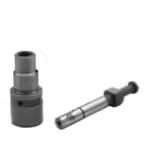In the complex environment of healthcare facilities, every detail matters, including the design and functionality of hospital doors. These doors serve not only as physical barriers but also as critical components that contribute to patient safety, infection control, and operational efficiency. Understanding the various types of hospital doors, their features, and their importance is essential for healthcare administrators, architects, and builders committed to creating safe and efficient medical environments.
The Importance of Hospital Doors
Hospital doors play a vital role in maintaining the integrity of healthcare facilities. They are designed to facilitate smooth operations while ensuring the safety and comfort of patients and staff. From emergency rooms to operating theaters, the right doors can significantly impact the functionality and accessibility of various areas within a hospital.
Safety and Security
One of the primary functions of hospital doors is to provide safety and security for patients, staff, and sensitive areas. Access control is crucial in hospitals, especially in areas such as operating rooms, intensive care units, and medication storage. Specialized doors equipped with locking mechanisms help restrict access to authorized personnel only, reducing the risk of unauthorized entry and potential harm.
Infection Control
Infection prevention is a top priority in healthcare settings. Hospital doors are designed with materials that facilitate cleaning and minimize the risk of contamination. Non-porous surfaces can be easily disinfected, helping to maintain a hygienic environment. Additionally, automatic sliding doors can reduce the need for physical contact, further lowering the risk of pathogen transmission.
Patient Comfort and Accessibility
Accessibility is a significant concern in hospital design. Doors must accommodate the needs of patients with mobility challenges, ensuring that all individuals can move freely within the facility. Wide doorways and automatic opening mechanisms enhance accessibility for patients in wheelchairs or those using other mobility aids. Moreover, the design of hospital doors can contribute to a calming atmosphere, positively affecting patient experiences.
Types of Hospital Doors
Several types of hospital doors are specifically designed to meet the unique demands of healthcare environments. Each type serves distinct purposes and is equipped with features that enhance functionality.
Automatic Sliding Doors
Automatic sliding doors are commonly found in hospital entrances and high-traffic areas. These doors provide seamless access, allowing patients and staff to enter and exit without needing to push or pull heavy doors. Their motion sensors ensure that doors open only when someone approaches, making them energy-efficient and convenient. Additionally, automatic sliding doors can be fitted with safety sensors to prevent accidents.
Hinged Doors
Hinged doors are traditional yet versatile options for various hospital applications. They can be equipped with heavy-duty materials that withstand frequent use while providing security and privacy. Hinged doors are often used in patient rooms, offices, and storage areas. They can also be designed to meet specific fire safety standards, ensuring compliance with regulations.
Fire-Rated Doors
Fire-rated doors are critical for maintaining safety in healthcare facilities. These doors are constructed with materials that can withstand high temperatures, preventing the spread of fire and smoke in the event of an emergency. Hospital designs often incorporate fire-rated doors in key locations, such as stairwells and corridors, to ensure safe evacuation routes for patients and staff.
Impact-Resistant Doors
Impact-resistant doors are designed to withstand high levels of wear and tear, making them ideal for areas that experience heavy foot traffic. These doors are often used in emergency departments and other high-stress environments where durability is essential. They can be constructed from various materials, including steel and fiberglass, ensuring long-lasting performance.
Acoustic Doors
In a hospital setting, noise control is vital for patient recovery and comfort. Acoustic doors are designed to reduce sound transmission between rooms, providing a quieter environment for patients. These doors are particularly beneficial in areas such as recovery rooms, maternity wards, and private patient rooms, where a peaceful atmosphere is crucial for healing.
Design Considerations for Hospital Doors
When selecting hospital doors, several design considerations should be taken into account to ensure they meet the specific needs of healthcare facilities.
Material Selection
The materials used for hospital doors must be durable and easy to maintain. Common materials include steel, aluminum, and high-density polyethylene, each offering unique benefits. Steel doors provide robust security, while aluminum doors are lightweight and rust-resistant. High-density polyethylene doors are highly resistant to moisture and easy to clean, making them suitable for high-hygiene areas.
Compliance with Regulations
Hospitals must adhere to strict regulations and standards regarding safety and accessibility. The Americans with Disabilities Act (ADA) outlines specific requirements for door widths, heights, and hardware to ensure accessibility for individuals with disabilities. Additionally, fire safety codes dictate the use of fire-rated doors in designated areas. Compliance with these regulations is essential for ensuring patient safety and avoiding legal issues.
Aesthetic Appeal
While functionality is paramount, the aesthetic appearance of hospital doors should not be overlooked. The design and color of doors can contribute to the overall ambiance of a healthcare facility. A welcoming environment can help alleviate patient anxiety and enhance the overall experience. Customizable options are available, allowing healthcare facilities to choose door designs that align with their branding and architectural style.
Maintenance of Hospital Doors
Regular maintenance of hospital doors is crucial to ensure their reliable performance and longevity. Facility managers should implement a routine inspection and maintenance schedule that includes the following:
Routine Inspections
Regular inspections help identify potential issues before they become significant problems. Facility managers should check for signs of wear and tear, such as misaligned tracks, damaged hardware, or worn seals. Addressing these issues promptly can prevent costly repairs and ensure the safety of patients and staff.
Cleaning Protocols
Maintaining a clean environment is essential in healthcare settings. Hospital doors should be cleaned regularly using appropriate disinfectants to minimize the risk of infection. Facility managers should establish cleaning protocols that outline the frequency and methods for cleaning doors, ensuring compliance with hygiene standards.
Lubrication and Repairs
Moving parts of hospital doors, such as hinges and tracks, should be lubricated regularly to ensure smooth operation. Any repairs needed for damaged components should be addressed promptly to prevent further issues. Engaging professional services for maintenance can provide expertise and ensure that doors operate efficiently.
The Future of Hospital Doors
As technology continues to advance, the future of hospital doors is likely to see further innovations. Smart technology integration will become increasingly common, allowing for features such as remote monitoring, automated access control, and enhanced security systems. These advancements can improve the efficiency of hospital operations while enhancing patient safety.
Additionally, the increasing emphasis on sustainability will influence the design of hospital doors. Eco-friendly materials and energy-efficient designs will become more prevalent, aligning with broader environmental goals within the healthcare industry. Implementing sustainable practices can help hospitals reduce their carbon footprint while maintaining high standards of safety and functionality.
Conclusion: The Vital Role of Hospital Doors in Healthcare Facilities
In conclusion, hospital doors are essential components of healthcare facilities that contribute significantly to safety, security, and operational efficiency. The variety of doors available, including automatic sliding doors, hinged doors, and fire-rated options, allows healthcare administrators to choose solutions that meet their specific needs. Regular maintenance and adherence to regulations are crucial for ensuring the longevity and effectiveness of these doors. For those seeking high-quality solutions that prioritize functionality and safety, exploring options from Security Doors Direct can provide valuable insights and resources tailored to the unique requirements of healthcare environments. Investing in the right hospital doors not only enhances the safety and comfort of patients but also supports the overall mission of providing quality healthcare.



